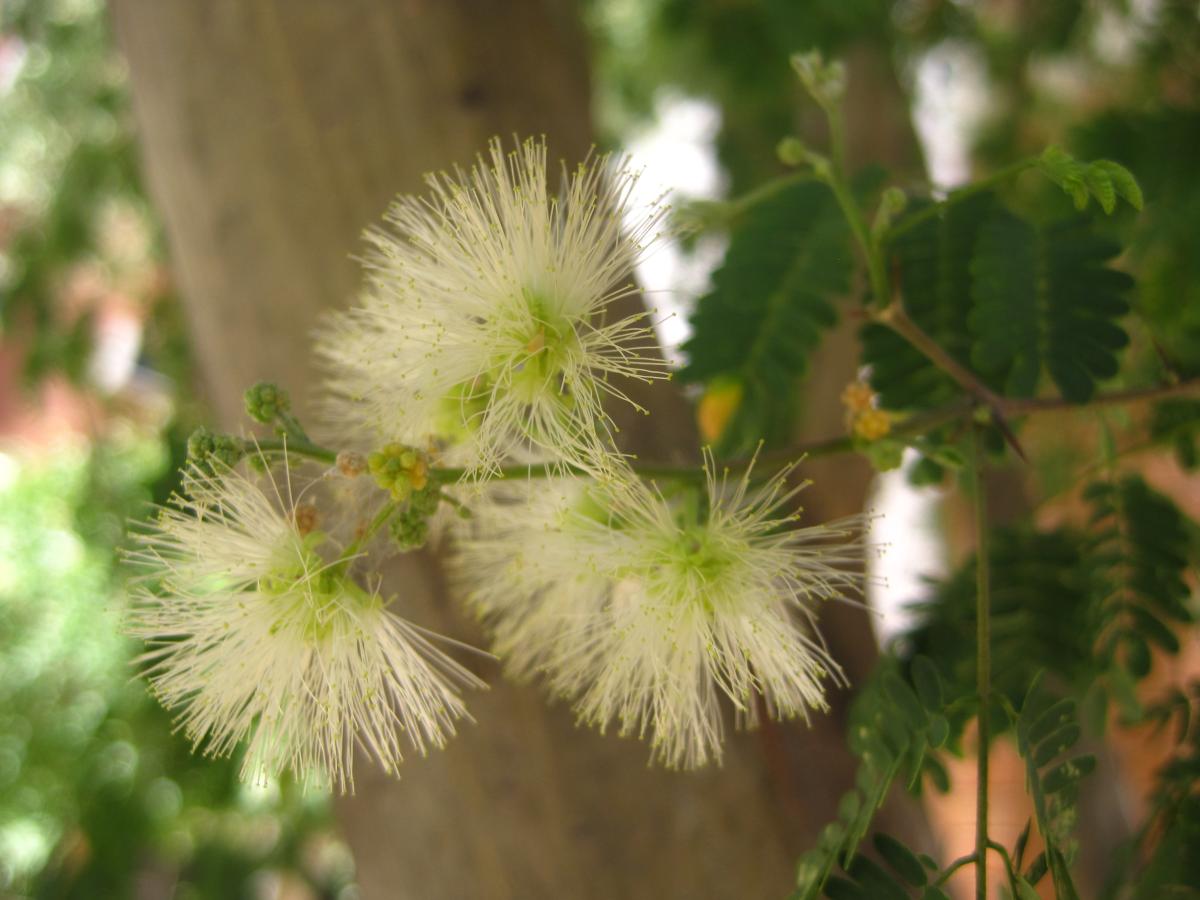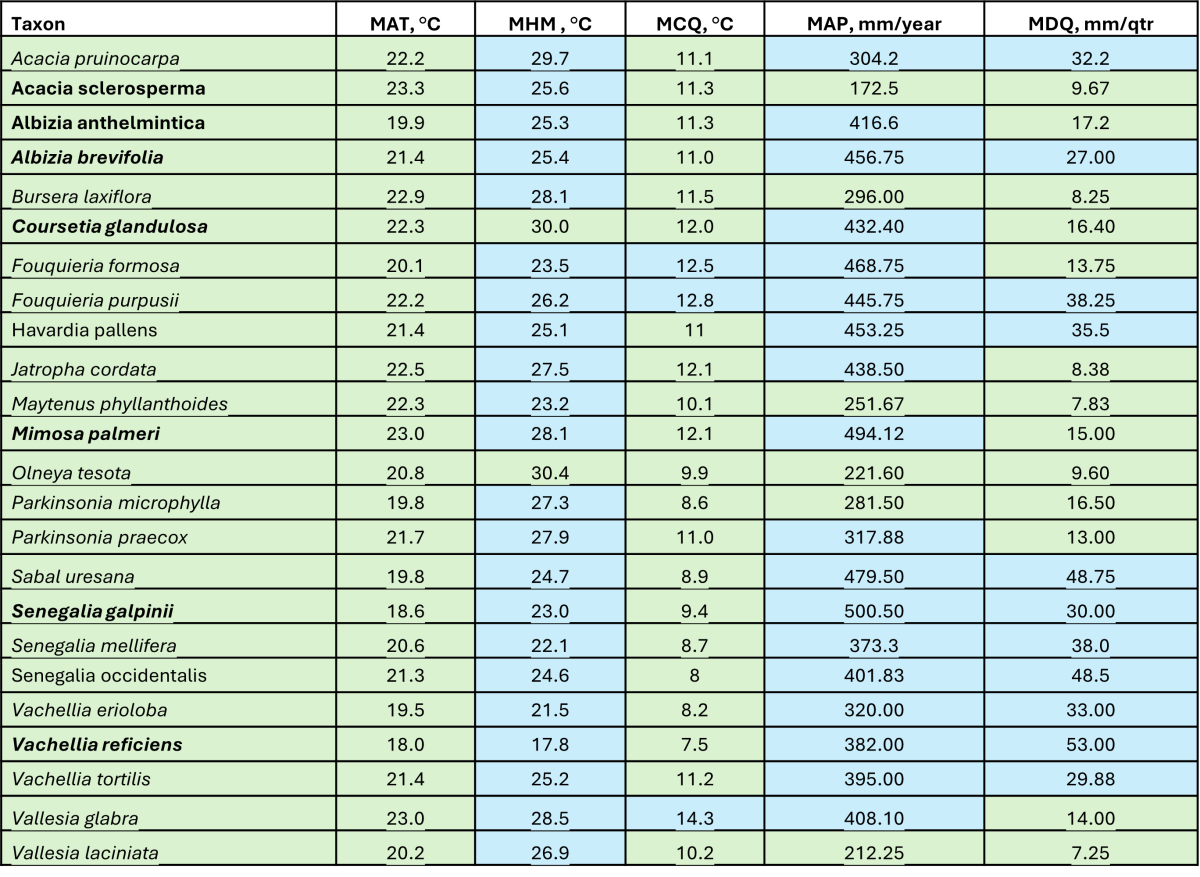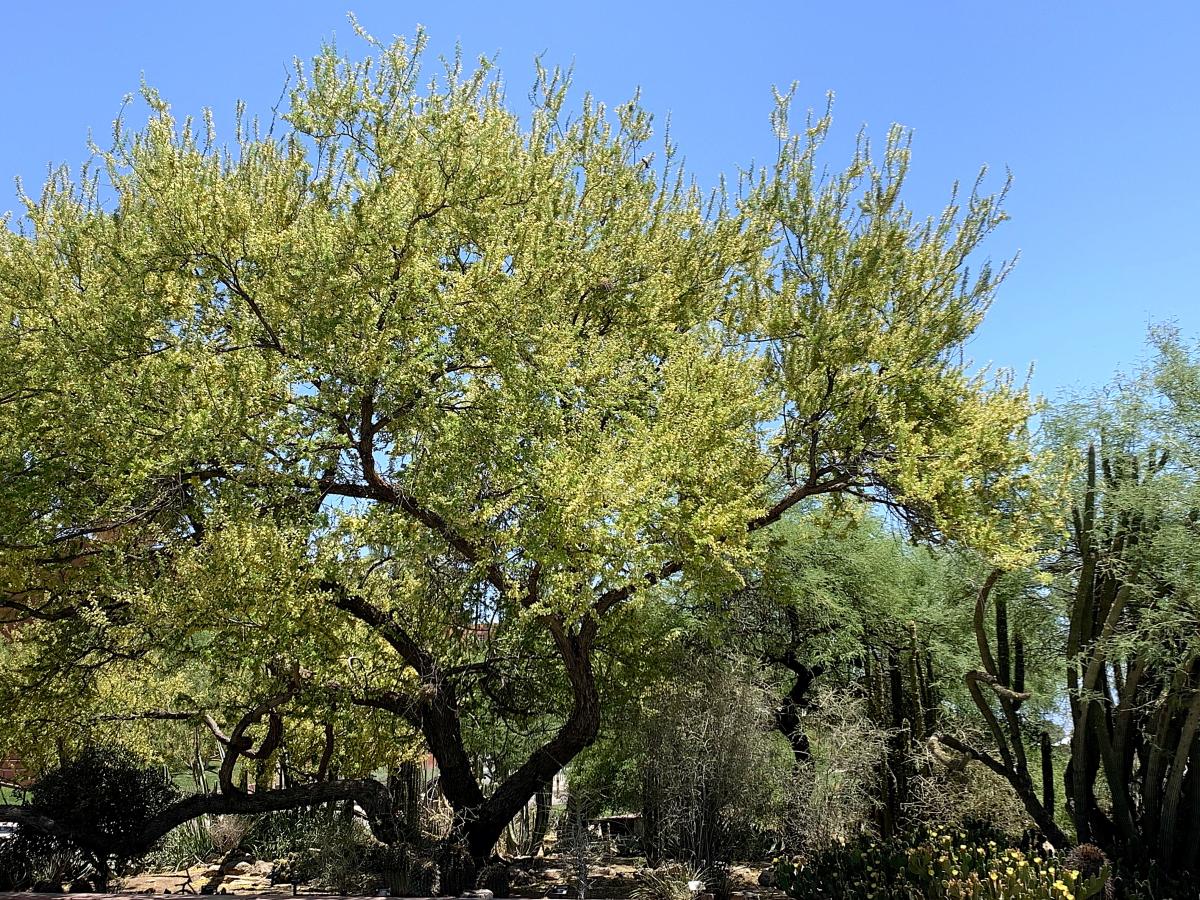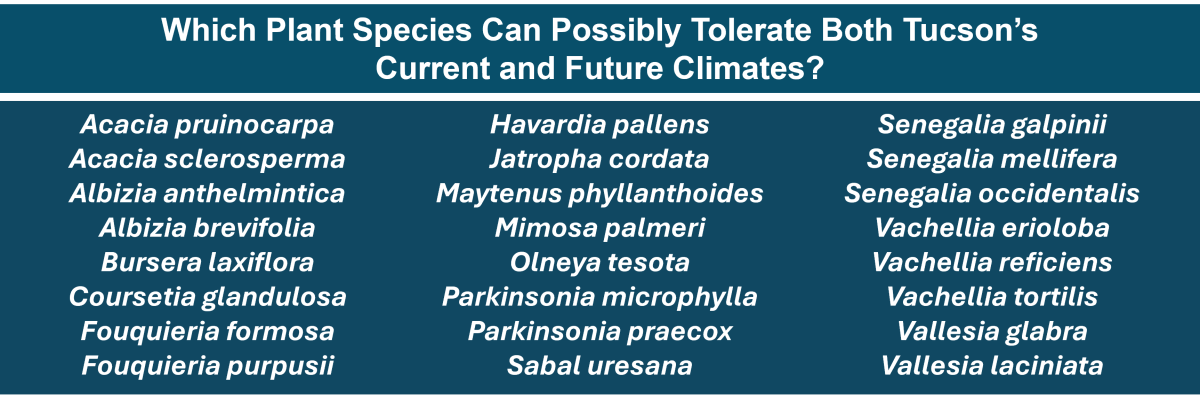Finding Potential "Climate Ready" Trees
 Join Us in Moving Forward! Past efforts by University of Arizona faculty research yielded a rich collection of arid adapted tree species that both helped create Arizona’s economic base in the early 20th Century and produced innumerous species populating urban landscapes throughout the southwestern US. However, the limitations on plant performance have and will continue to become increasingly challenging in the decades ahead. Though myriad community and environmental health benefits may result from improved tree selection for current and future climate scenarios, those benefits will only be realized to the extent that we can accurately match new tree species to current and future climate variables. This project aims to leverage those benefits to create a ranked list of tree species with potential to perform well in current and future climate scenarios.
Join Us in Moving Forward! Past efforts by University of Arizona faculty research yielded a rich collection of arid adapted tree species that both helped create Arizona’s economic base in the early 20th Century and produced innumerous species populating urban landscapes throughout the southwestern US. However, the limitations on plant performance have and will continue to become increasingly challenging in the decades ahead. Though myriad community and environmental health benefits may result from improved tree selection for current and future climate scenarios, those benefits will only be realized to the extent that we can accurately match new tree species to current and future climate variables. This project aims to leverage those benefits to create a ranked list of tree species with potential to perform well in current and future climate scenarios.
Help Us Identify Trees Adapted for Tucson, AZ.
We are seeking input from practitioners who have observed these plants growing in cultivation or in their native environments, to determine the upper and lower temperature thresholds experienced in those settings along with correlated plant performance experiences. To this end, in summer 2024, the Campus Arboretum invites those with expertise related to performance of these trees in cultivated or natural settings (in urban forestry, conservation horticulture, botany or landscape architects) to provide input via an electronic survey.
To participate and share your tree cultivation/performance experience, do the following:
Click HERE to review the list of plant species (google doc link)
Select the survey link shown beside each plants with which you have experience.
Complete each survey to indicate details of your experience with the plant (temperature thresholds, water needs etc)
For reference, the survey primarily aims to identify tree species suited for the high and low temperature thresholds experienced in Tucson, AZ. Tucson generally experiences temperatures between -9C (15F) and 46C (115F) and receives about 300 mm (10 inches) of annual precipitation. Additionally, as many of these trees will be integrated into succession plans for the Campus Arboretum, we would like to identify a subset of tree species that fit within the campus collection policy. Specifically, environmental criteria acceptable for campus introductions include tolerance to temperatures between -7C (20F) and 44C (112F) and ability to survive on 500 mm (20 inches) of annual precipitation.
Each survey takes about 5 minutes to complete.
The surveys will close in March 2025. Data will then be collated and a report of species likely to perform well in Tucson will be released summer 2025.
Read the Project Background
Methods:
This project started initially with a very broad list of 831 tree species from the Campus Arboretum’s collection inventory. This initial list was run through the Botanical Garden Conservation International’s (BGCI) Climate Assessment Tool (CAT) . This tool uses statistical methods to determine probability of a tree species growing under a defined climactic condition. It bases predictions on recorded observations of species in either a global databases of urban tree observations (e.g. Global Biodiversity Information Facility (GBIF)), or a global database of botanic gardens living collections (eg. PlantSearch). Based on observations of species in this database, we were able to evaluate 474 of our collections' taxa. It is clearly noted that, given the complexity and variability of living systems, the predictions are not an "absolute measure of whether a certain plant will survive or not, but can give at least a broad-stroke indication" (See here). This broad stroke indication effectively helps the Campus Arboretum to aim for a greater proportion of our collection's taxa with reduced risk for loss in future climates. These results will serve as the basis for future work to refine temperature tolerance thresholds for arboretum species and be eventually integrated into the Campus Arboretum Collection Policy and later succession plans. This tool generates a ranking for each species based upon observations of that species globally in regions with the same mean annual temperature as Tucson. Tucson’s current MAT (as of 2020) is 21°C, though the MAT predicted for Tucson in 2050 (under limited emissions climate change scenario SSP2/RCP4.5) is 23.6°C, and in 2090 (under the business as usual climate change scenario -SSP3/RCP7.0) 26.5°C. We sorted the results, assigning those plants observed to be in the middle of their natural range (a BGCI rating of 11).
Results:
Since the <500 mm precipitation satisfies the Campus Arboretum Collections Policy criteria, we further limited the results based on the average precipitation in their native range. From the Campus Arboretum’s inventory, we identified 80 species observed globally in regions with MAT of 21°C and less than 500 mm of precipitation annually. We also identified 34 species observed in regions with MAT of 23.5°C and less than 500 mm of precipitation annually. In an effort to expand the list and consider plants not previously grown on campus, we added the taxa listed found in the complete inventory of the Desert Legume Programs seedbank and repeated the analysis using the BGCI CAT. After adding the taxa from the DELEP inventory, we identified an additional 28 taxa potentially suited for regions which have been observed in regions with a MAT of 21°C and an additional 30 taxa potentially suited for regions with a MAT of 23.5°C. In total, analysis of the Campus Arboretum inventory plus the species found in the DELEP inventory, yielded 108 taxa to consider further. To access the complete set of results select a link here [PDF format] or [ MS Excel File]
Interestingly, the following 24 taxa rated 11 (middle of their natural range) have been observed in regions similar to Tucson’s current MAT of 21°C as well as in regions with MAT of 23.5°C (corresponding to that predicted for Tucson under the Limited Emissions Scenario) where they were also observed growing in areas receiving less than 500mm annual precipitation. As such, these may have potential to grow in current climate as well as into the changing climate (under limited emissions). Given the added potential of this group of 24 taxa to tolerate current and future climate, these will be the first to be further evaluated.
Do Species Origins Share Other Climate Similarities with Tucson?
When we asked which of these 24 species have been observed in regions with other climate similarities to Tucson? We found the following:

More Nuanced Climate Detail for Tucson, AZ
Specifically, we used the Tucson data available from the National Weather Service to determine the MHM: 30.05°C, MCQ: 12.37°C, MAP: 270mm/yr, MDQ: 17.02mm/yr. Those cells shaded in blue in the table above indicate where the plant differs from Tucson’s climate and may need intervention to survive. Those noted in bold font have not yet been grown on the UArizona campus.
What About Cold Tolerance?
Since additional precipitation can be provided during the hottest months, identifying species that are not only heat and drought tolerant but also able to withstand Tucson’s coldest months is of particular interest for tree cultivation. As such, we looked at the plants observed in regions with MAT of 21ºC and 23.5ºC to determine which are likely to survive the mean temperature of the coldest quarter MCQ) in Tucson of ~12ºC( Dec-Feb). We found that 21 of the 24 species observed in regions with MAT of both 21°C and 23.5°C. These three less cold hardy species included: Vallesia glabra, Fouquieria purpusii, and Fouquieria formosa . This tracks with our experience growing Vallesia glabra and the presence of the Fouquieria species in protected cultivation (at Biosphere2 or in the Arboretum's Mark Dimmitt Desert Plant Conservatory).
Performance Testing
For those not previously grown on the UArizona campus (species name is shown in bold), we have begun to propagate these for planting and performance assessment on campus. We will also confer with those who have more experience cultivating or observing all these plants in their native environments to further refine potential adaptation of these 24 species to high temperatures (46°C / 115°F) and cold temperatures (-9°C / 15°F) experienced in recent decades in Tucson. We are currently propagating many of these species with plant to plant them on campus. We will observe and collect data on plant growth and performance over time. Promising performers will be integrated into succession planning for the campus landscape and recommended to nursery producers and landscape architects.
A Call to Action.
While we wait for the plants to become mature enough to plant outside, we will take additional steps to collect information on these 24 promising species. Specifically, we would like to refine further the adaptation of these taxa to the absolute high (46°C / 115°F) and low temperatures (-9°C / 15°F) experienced in recent decades in Tucson. As such, we are seeking input from practitioners who have observed these plants growing in cultivation or in their native environment. We invite you to participate by sharing your experience and noting especially the upper and lower temperature thresholds experienced in those settings along with correlated plant performance experiences. The electronic survey links above connect you to the surveys where you can share your experience.





